Recently I got a call from a patient who told me that her doctor told her all she needs to do is eat a “healthy diet”. So her question for me was: what exactly is a healthy diet these days?
That’s a pretty loaded question and one that is not at all easy to answer. She went on to tell me that she has been looking at labels regularly and is very confused. Between marketing claims for nutritious and healthy foods and front of package claims that suggest that just about everything is a healthy choice, she was pretty frustrated. And I can’t blame her. I’m pretty frustrated myself. Even with a degree in nutrition and 12 years as a dietitian I find myself wanting to trust the myriad of symbols on the front of food packages and am often shocked by what I see when I look a little closer.
Here are some examples I find especially annoying and confusing to consumers.
- Vegetable juices that are loaded with sodium but are marketed as being pretty much the same as fresh veggies and carry an endorsement on the front of the package that makes them seem heart healthy.
- Serving sizes that don’t resemble what most of us would consider a serving.
- Products that claim to be “part” of a nutritious breakfast but don’t actually contribute anything healthy to your diet. This includes sugary cereals that are pointedly aimed at kids.
- High fat products (such as potato chips) that say “cholesterol free” on the package! Only animal based foods contain cholesterol and the evidence that dietary cholesterol is bad for us is pretty limited compared to the evidence that high fat is bad for us.
- “Sodium-reduced” products that still provide over half of your daily sodium needs.
- Fresh fruits, vegetables, grains and unprocessed meats that don’t carry any health claims but are truly the cornerstone of any “healthy diet”.
So the answer to the question truly seems to be: a healthy diet includes as much fresh and unprocessed food as possible. If you don’t require a potassium restriction it also includes lots of fresh fruits and vegetables (in their unprocessed state) or as many as your dietitian says you can safely include. And the bottom line is: be sceptical! Turn the product over, read the ingredients and the Nutrition Facts table.
For a great website on label reading for sodium check out www.sodium101.ca.
Here’s a great salad dressing recipe that has no added salt:
Tarragon Vinaigrette
1 tsp Dijon mustard
2 tbsp lemon juice
2 tbsp white wine vinegar
1 tbsp minced shallot
2 tbsp fresh tarragon or 1 tsp dried tarragon
1/3 cup extra virgin olive oil
Mince shallots. Add mustard, tarragon, lemon juice, and vinegar. Whisk in olive oil. Drizzle over your favourite greens. Make it a complete meal with leftover chicken and a roll.
Recipe developed by Chef Leslie Cairns.
